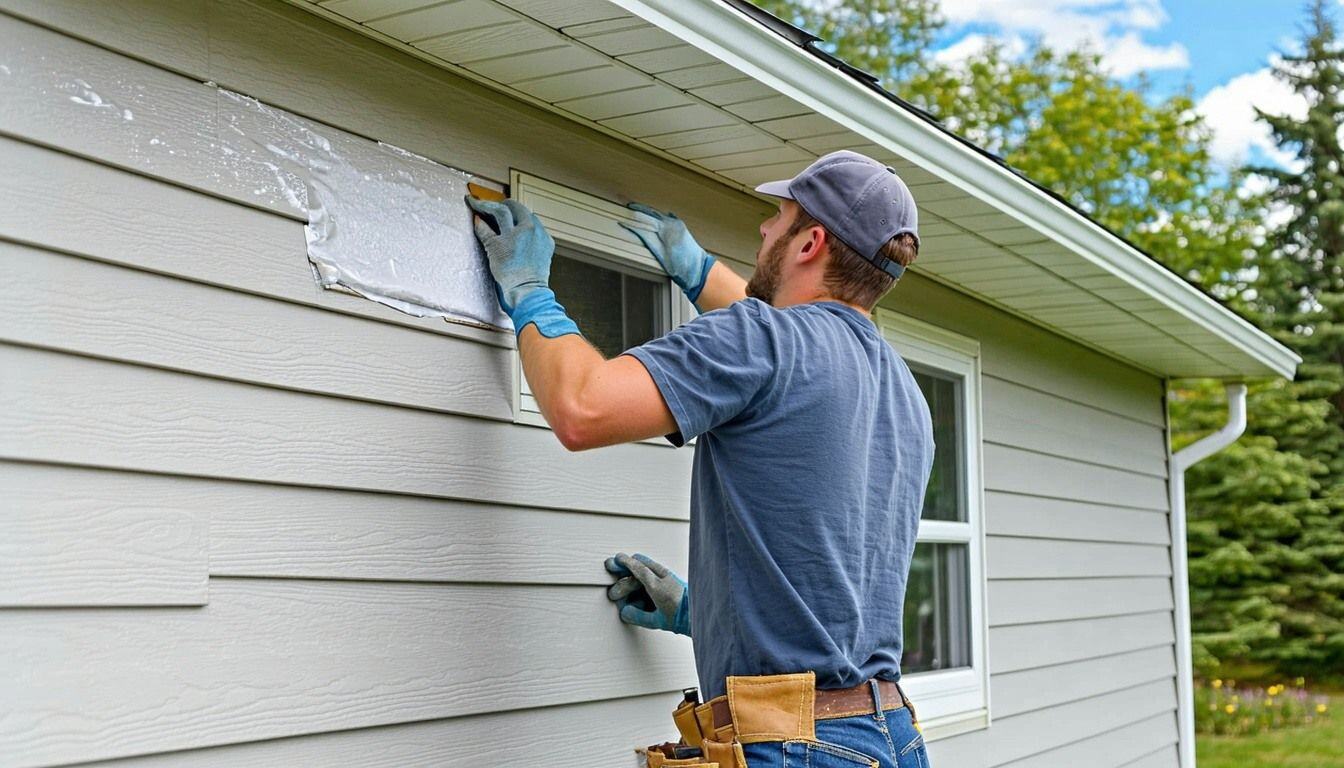5 Things to Consider When Residing a House


Residing a house is a big decision, and not just for curb appeal.
While new siding can totally transform the look of your home, there's a lot more to think about before the first panel goes up.
Whether your current siding is faded from years of sun exposure or just doesn't fit your forever home vision, there's more to this upgrade than you might expect. From materials to moisture control to what's behind your walls, let's break it all down.
At RetroFoam of Michigan, we've insulated thousands of homes across the Lower Peninsula. And we know that when you reside a house, it's the perfect time to reassess what's going on behind that siding -- especially your insulation.
As someone who's worked in the home improvement business for several years, I want to help you avoid common mistakes and make the most of your siding upgrade.
What to Think About When Residing a House
Residing a house isn't just about aesthetics.
Here are a few key things to consider before making a final decision.
Not All Siding is Created Equal
Just like car shopping, picking out siding comes with a lot of options and a wide range of price tags.
Here's what to think about:
- Fanfold quality: Standard vs. premium versions.
- Color durability: Siding with through-color versus surface-only color.
- UV protection: Some siding has a special coating to resist sun damage.
- Thickness: Thicker siding means better durability and longer life.
- Insulated siding: Some siding comes with foam backing, but don't confuse this with full wall insulation.
There's also a wide range in quality. Think good, better, best. It's worth doing your homework so you know exactly what you're paying for when you reside your house.
Should You Add House Wrap?
House wrap is a synthetic barrier that goes between your siding and wall sheathing.
It helps prevent water intrusion while allowing water vapor to escape.
Adding house wrap is a smart move, especially if your walls contain traditional insulation like fiberglass or cellulose, which can trap moisture and contribute to mold and mildew.
If you already have or are planning to add injection foam insulation, you're in even better shape. Foam doesn't retain moisture and also acts as an air barrier. Pairing house wrap with foam insulation can give you even greater protection from the elements.
Hire the Right Contractor
Your siding is only as good as the person installing it.
Before signing on the dotted line:
- Read online reviews and ratings.
- Ask for references and examples of completed work.
- Confirm the contractor is licensed and insured in your state.
If something goes wrong during the install, you'll want to be protected.
Siding and Insulation are Not on the Same Level
Here's a common myth we hear all the time: "New siding will make my home more energy efficient."
Unfortunately, that's not really true. While siding offers a minor buffer, it's not going to solve issues like drafts, cold rooms, or high energy bills.
Think of siding as the exterior shell -- it looks nice, but it doesn't create the air seal you need for real energy efficiency. That job falls to proper wall insulation.
If you reside a house without addressing poor insulation, you're just covering up the real issue.
What's in Your Walls?
Before you start residing your house, it's smart to find out what insulation is already in place.
If your walls are filled with older fiberglass or cellulose, they're likely allowing air to leak in and out, causing uncomfortable temperature swings and higher energy costs.
Upgrading to injection foam insulation creates an air seal in the exterior walls, making your home more comfortable and efficient. And here's the good news: you don't have to wait for new siding to get foam installed.
Even if you're planning to reside your house later, a qualified contractor can temporarily remove your current siding, install foam, and put it right back. When you're ready for new siding, the same approach works too -- modern siding is durable and can be carefully removed and reinstalled without damage.
What's Next?
If you're residing your house because of drafts, cold rooms, or rising energy bills, siding alone won't solve the problem.
Upgrading your insulation, especially to something like injection foam, will have a much bigger impact.
If you're curious about foam insulation for your home, check out our Learning Center to explore your options.
Key Points:
- Residing a house can improve looks, but it won't solve insulation issues.
- Choose siding based on thickness, UV protection, and durability.
- Don't skip house wrap -- it adds valuable moisture protection.
- Always work with a licensed and insured contractor.
- Siding offers minimal insulation -- foam insulation is what truly boosts efficiency.
- Existing siding can be removed to install foam and reinstalled seamlessly.
- Insulated siding isn't a substitute for a fully insulated wall cavity.
Related Articles
Foam Insulation Options When a House Has No Exterior Wall Sheathing
4 Situations When Injection Foam Can’t Be Installed as Exterior Wall Insulation
Exterior Wall Insulation Problems: Top 5 Things to Look Out For
About Mike Weaver
Mike's favorite part about being an estimator is the team and family atmosphere, as well as helping to make homes more comfortable and energy efficient. A typical work day for Mike involves listening to homeowners and helping them craft solutions that will make their homes more comfortable while saving them money on monthly energy bills. In his free time, Mike likes spending time with his family and working on projects of his own around his home.


